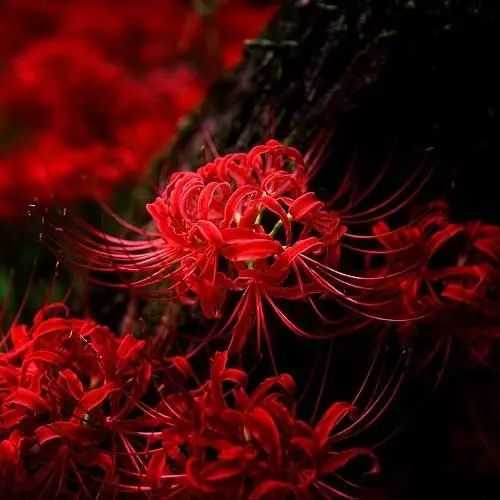Search for information
The Enigmatic Red Spider Lily: A Floral Emblem of TransienceThe Red Spider Lily (Lycoris radiata), the most iconic variety of the 彼岸花 (Equinox Flower), has long fascinated cultures across East Asia with its striking appearance and symbolic weight. Native to China, Japan, and Korea, this bulbous perennial emerges in late summer, captivating observers with its dramatic blooms that seem to materialize from barren earth.
June 17, 2025, 11:58 am EDT
The Enigmatic Red Spider Lily: A Floral Emblem of Transience

A Botanical Spectacle of Ethereal Beauty
Cultural Symbolism and Ecological Roles

Bugatti Chiron Super Sport 300+: The 2019 Speed Demon That Redefined Automotive Extremes
Unveiled in 2019, the Bugatti Chiron Super Sport 300+ shattered the boundaries of human perception, not just as a supercar but as a mechanical embodiment of speed itself. With a verified top speed of 490.484 km/h (304.773 mph), this limited edition (just 30 units worldwide) marked a new milestone in automotive history—proving that Bugatti’s obsession with velocity knows no limits.more

Exploring Brazil's Iconic Culinary Delights: A Journey Through Churrasco, Feijoada, and Xis
No discussion of Brazilian cuisine is complete without starting with Churrasco, a culinary masterpiece that graces the country’s state banquets. Originating in the late 18th century, this tradition began when Brazilian cowboys (Gaúchos) skewered meat on longswords and roasted it over campfires. Today, it stands as a symbol of Brazil’s rich culinary heritage.more

Argentina’s Alfajor and Parrilla, Brazil’s Churrasco, and Peru’s Ceviche
An iconic Argentine treat, the alfajor is a sandwich-style dessert made with two or more cookies filled with luscious layers of dulce de leche, honey, or fruit preserves, often coated in chocolate, sugar icing, or powdered sugar. Some versions incorporate nuts like almonds or chunks of chocolate for texture.more

A Gastronomic Journey Through Europe: Unique Flavors and Cultural Delights
Scotland, a nation with a storied history of resilience and struggle for independence—epitomized by heroes like William Wallace in Braveheart—boasts a culinary tradition as robust as its heritage. Central to this is haggis, the country’s iconic dish.more

Lamborghini Urraco: When the "Little Bull" Charged Into Mid - Market Mastery
While the 350 GT’s design language faded without leaving a legacy in Lamborghini’s lineage—looking outdated even in its birth year—the brand quickly veered to an aesthetic extreme inspired by its iconic symbol: the bull. Enter the Urraco, a name that translates to "little bull" in Italian, debuting as Lamborghini’s first mid - engine entry - level model in 1970. This pivotal model steered clear of Corvette or Aston Martin influences, instead channeling the ferocity and muscularity of its bovine namesake.more

Vintage Caravan: Amateur Model's Retro Road Trip 169
Hit the open road with an amateur model in this nostalgic photo series centered around a vintage caravan. From dusty backroads to scenic viewpoints, she embraces the charm of a retro - style road trip.more

The Pink River Dolphin: Amazon’s Enigmatic Pink Wonder Unique to River Ecosystems
In the murky waters of the Amazon and Orinoco river basins, a creature of mythical allure glides through the currents: the pink river dolphin (Inia geoffrensis), a unique species that has captivated indigenous tribes and scientists for centuries. Often called the "botos," these dolphins stand out not only for their striking pink hue but as one of the few freshwater dolphin species on Earth, evolving the perfect adaptation to thrive in the Amazon’s labyrinthine waterways.more

The Yeti Crab: Deep-Sea Marvel with Hairy Pincers and a Chemosynthetic Lifestyle
Discovered in 2005 near hydrothermal vents off Easter Island, the yeti crab (Kiwa hirsuta) is a crustacean unlike any other—renowned for its fuzzy, blond "hair" covering its pincers and body, earning it the nickname "yeti crab." This deep-sea dweller thrives in one of Earth’s most extreme environments, relying on a unique partnership with bacteria for survival.more

